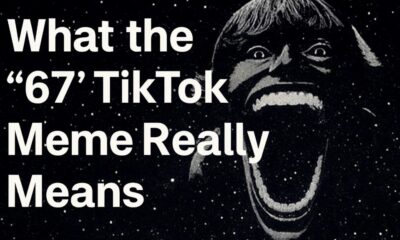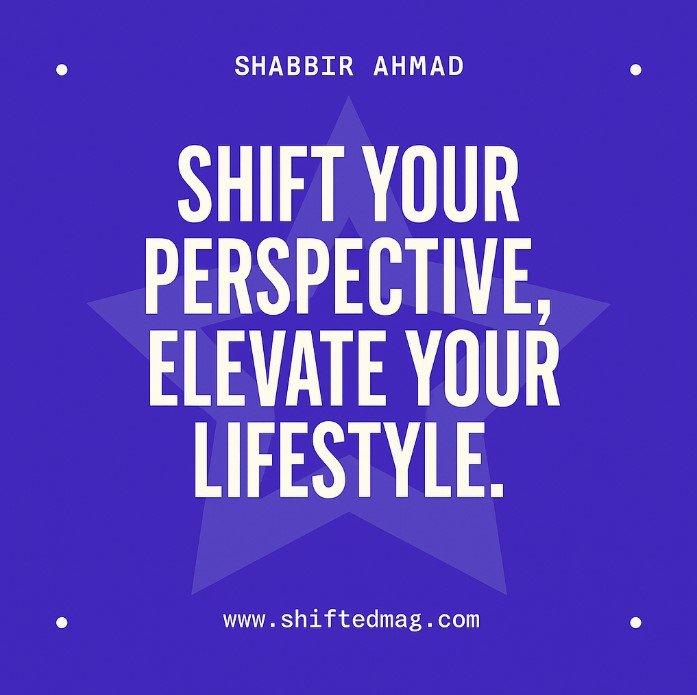Self Improvement
Tech Meets Wellness: The Future of Men’s Personal Care

What used to be a simple wash-and-shave routine is morphing into a connected ecosystem of sensors, algorithms and app-driven rituals. From AI skin diagnostics to smart vibrators, technology is quietly recoding what “looking after yourself” means for men—and the market is ready. A 2025 McKinsey survey of beauty executives ranks “industry expansion into wellness and personal care” among the sector’s top strategic priorities, with male consumers flagged as an under-tapped growth engine. Below, we map seven tech trends poised to make tomorrow’s Dopp kit unrecognisable.
Sexual wellness goes “quantified”
Perhaps the boldest tech leap sits at the intersection of pleasure and health. Sophisticated male sex toys now feature app-linked vibration patterns, biometric-grade silicone, and stroking algorithms that learn what works for you. Beyond novelty, the wellness upside is real: the Cleveland Clinic lists stress reduction, better slee,p and mood elevation among the many evidence-backed benefits of regular, shame-free masturbation. As mainstream retailers keep these devices alongside beard trimmers and hair gel, sexual self-care is positioned as just another pillar of holistic hygiene.
AI-powered skin diagnostics
Hand-held devices and phone cameras can now zoom in on pores, analyse roughness, and spot early UV damage in seconds. The resulting selfie scan auto-generates a routine—think cleanser, serum, SPF—backed by push-notification reminders. Dermatologists still insist the fundamentals matter most, though: cleanse, moisturise, protect every single day remains the gold standard according to Harvard Health. By packaging that advice inside gamified dashboards and weekly progress photos, tech removes friction and keeps compliance high.
Wearables that coach recovery, not just reps
Fitness trackers started life as glorified pedometers; today they monitor heart-rate variability, skin temperature, and even galvanic stress responses. Men are using the data to schedule ice baths, guided breathing sessions, and bedtime routines instead of merely chasing step counts. Expect sensors to migrate into compression sleeves and post-workout massage guns, delivering real-time feedback on muscle oxygenation so you know exactly when to push harder or call it a night.
Connected grooming gadgets
Electric toothbrushes led the charge with Bluetooth brushing scores; now the same principle powers AI razors that map facial topography and adjust motor speed on the fly, minimising nicks for coarse-bearded users. Smart clippers track blade sharpness and nudge you to replace cartridges before irritation strikes. Even cologne bottles are getting chips: an NFC tag pairs with an app that suggests fragrance notes based on weather and skin pH, turning scent into a data point rather than a guess.
Augmented-reality coaching
Mirror-mounted AR displays are moving from sci-fi to bathroom reality. Align your face in the outline and a floating overlay walks you through a four-step cleanse-exfoliate-treat-protect sequence, highlighting missed spots in real time. The same tech can project beard-style templates, guide a beginner through a wet-shave angle, or simulate different hair-colour outcomes before you commit to the dye. Voice assistants layer on hands-free timers—“leave the clay mask on for eight minutes”—so you never overdo it.
Sustainability meets subscription firmware
Many of these gadgets are rechargeable, firmware-updatable, and built to last years, breaking the razor-handle-plus-disposable-cartridge model that drives landfill. Refillable deodorant pods auto-order when a lid-embedded sensor detects you’re down to 10 grams. A beard-oil warming dock records ambient humidity and adjusts viscosity, squeezing maximum mileage from each refill. For eco-conscious consumers, the circular design ethos turns “techie” from energy-hog into planet-friend.

The data dividend: ultra-personalised everything
Collectively, the above devices produce a river of personal metrics—sleep efficiency, sebum levels, cortisol trends, and even arousal frequency. Pooled (with consent) into cloud algorithms, they enable skincare companies to tweak actives, supplement brands to fine-tune dosages, and mental-health apps to time interventions when you’re most receptive. The feedback loop tightens until care feels as tailor-made as a Savile Row suit.
What this means for the modern man
- Less guesswork, more guidance. Real-time analytics demystify grooming, replacing folklore with evidence.
- Preventive beats reactive. Early warnings about skin damage or elevated stress stop small issues ballooning into medical bills.
- Pleasure legitimised as healthcare. Tech-enabled sexual wellness reframes solo play and partner play alike as proactive self-care, not adolescent indulgence.
- Sustainability without compromise. Smart devices can be greener than single-use goods when designed for modular upgrades.
- New privacy calculus. Sharing biometrics with a shaving app isn’t trivial; brands that encrypt, anonymise, and allow data portability will earn loyalty.
Looking ahead
The convergence of biotech, sensor miniaturisation, and AI promises even richer insights: imagine a razor that screens for vitamin deficiencies via microscopic skin-cell analysis, or a vibrational trainer that tracks pelvic-floor strength over time. As men grow comfortable treating their bodies as platforms for optimisation—not stoic machines to be ignored until they break—the value of smart self-care will only rise.
McKinsey projects sustained 6 percent annual growth in the global skincare category through 2029, with men a key volume driver. Add sexual-wellness gadgets, mental-health wearables, and sustainable refills to the basket, and the future Dopp kit starts to look less like a toiletry bag and more like a personalised health hub.
Whether you dive in with a single sensor-packed toothbrush or go full quantified-self with AR mirrors and app-synced stimulators, the takeaway is clear: tech is erasing the line between grooming and wellness. Investing in the right device today could mean clearer skin, calmer nerves, better sleep, and yes, better sex—tomorrow. The smartest move isn’t waiting for the future to arrive; it’s plugging it in, pairing over Bluetoot,h and pressing start.
-

 Tech2 months ago
Tech2 months agoSora 2 Invite Code: How to Get One (Step-by-Step Guide)
-

 Social Media2 months ago
Social Media2 months agoWhat the “67” TikTok Meme Really Means
-

 Business2 months ago
Business2 months agoDubai Freezone Company Formation: From Name Reservation to Bank Account
-

 Tech2 months ago
Tech2 months agoWhat To Do When Your Business Faces Network Vulnerabilities






